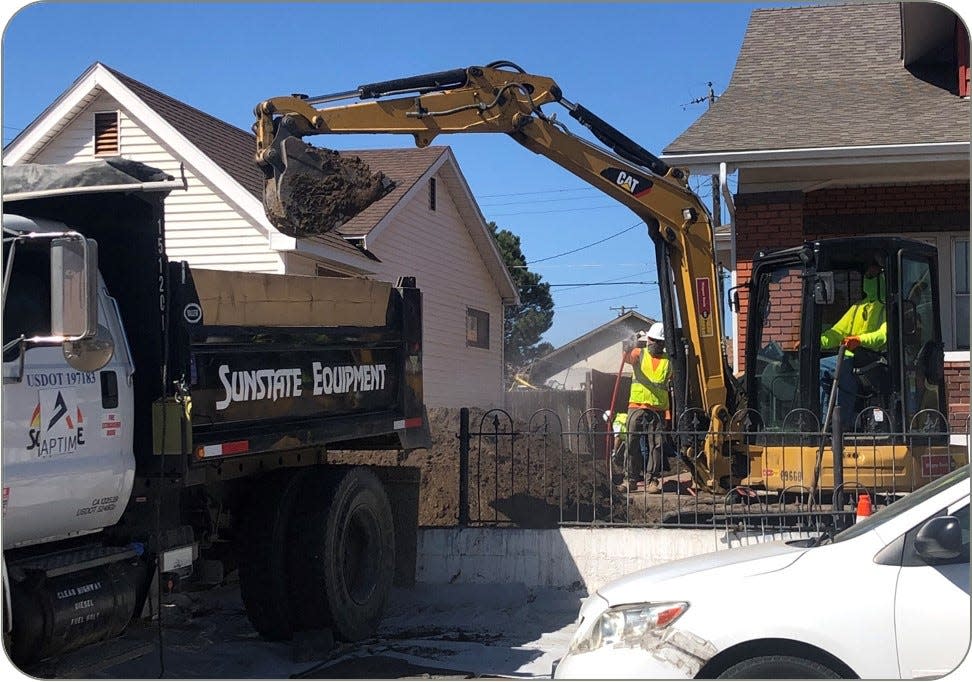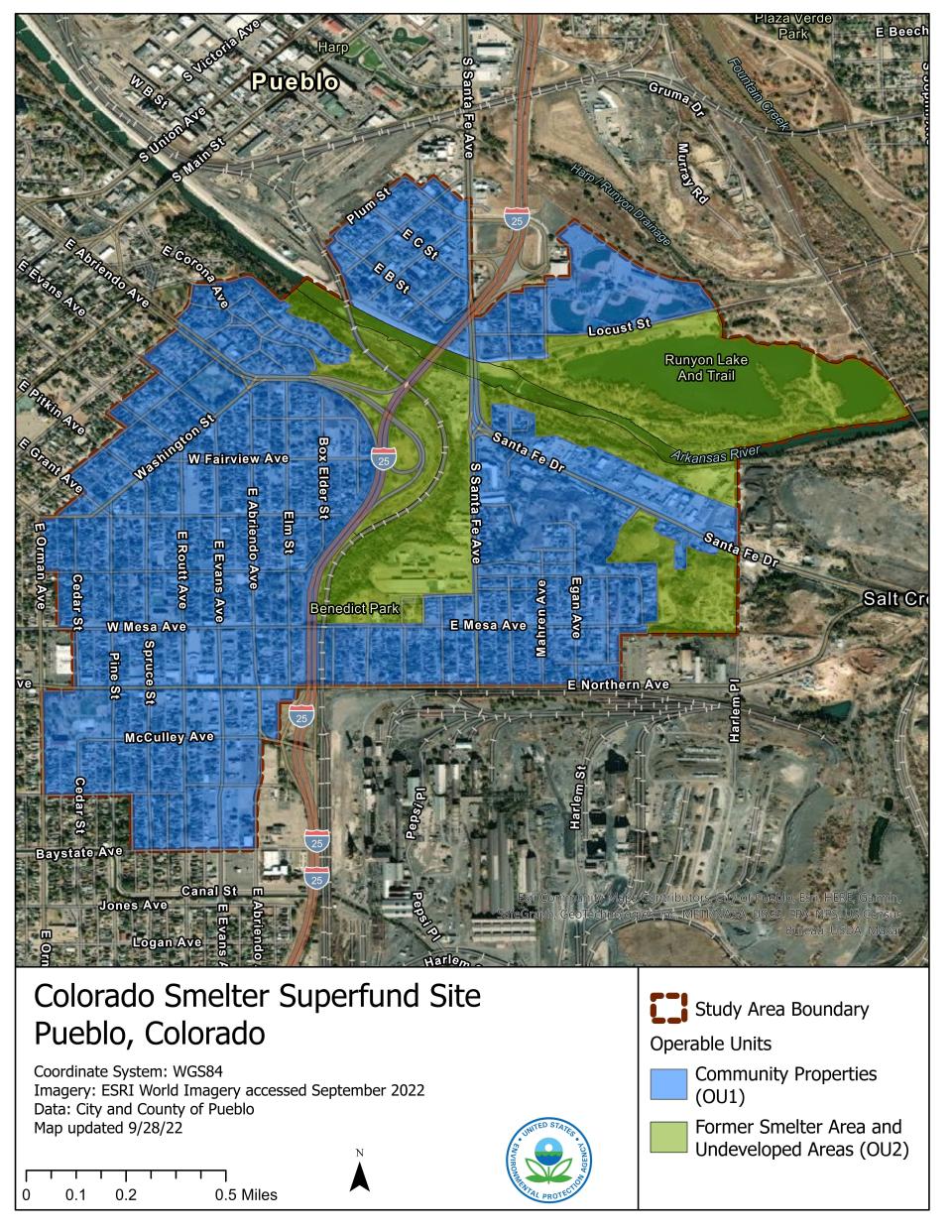EPA expects to finish residential cleanup of Colorado Smelter Superfund Site by spring 2024

With soil sampling 98% complete at the Colorado Smelter Superfund Site, the Environmental Protection Agency seeks to finish its residential cleanup by spring 2024, if not sooner.
Since 2015, the EPA has conducted outdoor soil and indoor dust samplings of lead and arsenic levels at residences near the former Colorado Smelter. When samples taken from residences show harmful levels of contaminants, the properties are then earmarked for EPA cleanup.
Due to the COVID-19 pandemic, the EPA's progress on dust sampling has trailed behind its soil sampling efforts. The agency has sampled dust at 73% of the properties it's targeted in Pueblo's Bessemer, Eilers and Grove neighborhoods.
As of Oct. 28, about 44% of the 1,833 properties that have received soil sampling have required cleanup, according to the EPA, as have about 36% of the 1,361 dust-sampled properties.
"We can see a house that has pretty high concentrations of lead or arsenic right next to a house that doesn't have anything above our cleanup level. ... It really is case by case," said Beth Archer, community involvement coordinator for EPA Region 8.
Lead Paint in Pueblo homes:Environmental Protection Agency seeks to reduce lead exposure in Pueblo
Founded by Anton Eilers in 1883, Colorado Smelter operated as a lead and silver smelter for 25 years. During its operation, lead and arsenic particles from smokestacks were sent into the air and scattered by the wind, which is one of many reasons a property with high lead and arsenic concentrations may be located directly next to a property with low concentrations, Archer said.
"There are other sources of lead, especially lead-based paint," she said. "We don't have a way of differentiating if the lead we see is lead from a smelter or from lead-based paint. If there is paint on the house that is cracking and falls into the soil then we will detect that lead."

Ground cover like grass and cement may act as a barrier protecting soil from lead and arsenic particles, which is one of the reasons why residential properties in the Colorado Smelter Superfund Site area are higher cleanup priorities than commercial properties.
"We are going to sample and come up with a remedy for those commercial properties, but we are not there yet," Archer said. "That sampling will probably happen after we finish the residential areas ... we don't anticipate there to be as much of an exposure pathway (on commercial properties), but we still want to sample and figure out what the exposure pathway is and what needs to be done."
West Side Sewer Project:Pueblo council approves additional $1 million in ARPA funds for west side sewer line
Tentatively scheduled completion dates for residential soil and dust sampling are summer and winter 2023, respectively. Crews plan to finish soil cleanup between summer and fall 2023, while dust cleanup is expected to be completed between winter 2023 and spring 2024.
"We want to give as many people as possible the opportunity to sign up (for sampling), so we are pushing that last deadline as far out as we can," Archer said.
To sign up for soil and dust sampling, residents may contact Ben Oakland at ben.oakland@pwt.com or by calling 303-482-6970. Residents living at properties requiring cleanup may contact APTIM at 719-299 4468.
Pueblo Chieftain reporter James Bartolo can be reached by email at JBartolo@gannett.com.
This article originally appeared on The Pueblo Chieftain: EPA plans on finishing residential cleanup at Pueblo smelter in 2024

